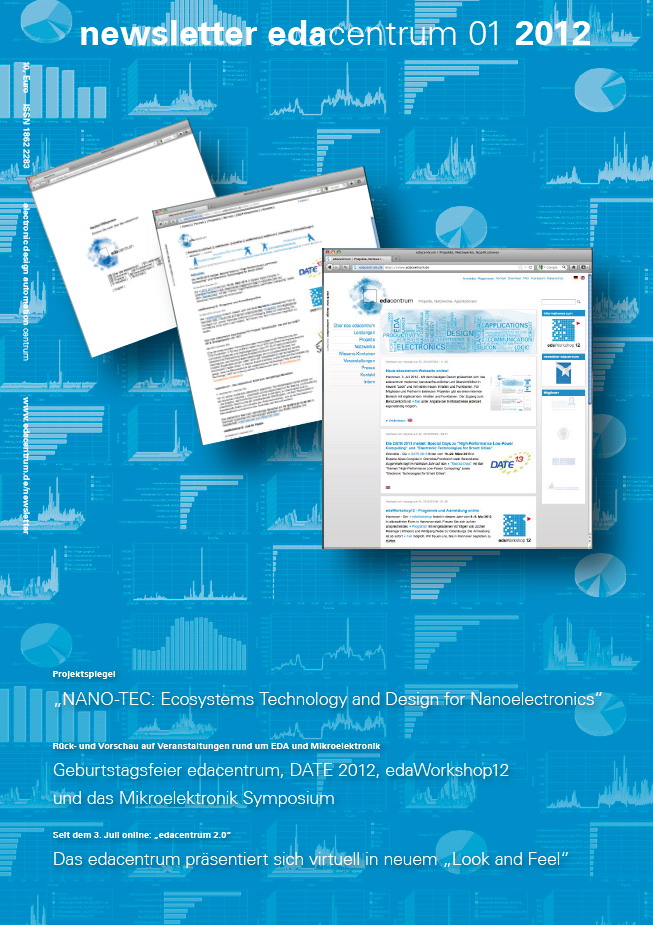newsletter edacentrum - mitgliederinterne Ausgaben
Liebe Mitglieder,
auf dieser (mitgliederinternen) Seite erhalten Sie Zugriff auf alle bisher erschienen Ausgaben des newsletter edacentrum als PDF. Bitte beachten Sie, dass die bis 02 2006 entstandenen Ausgaben als mitglieder-interne Zeitschrift ohne ISSN erschienen sind.
Überblicksartige Informationen zum Inhalt der seit Mai 2006 mit ISSN publizierten Ausgaben finden Sie auf der öffentlichen Webseite des "newsletter edacentrum".
 NL 01 2013 mit ISSN |
 NL 02 2013 mit ISSN |
 NL 01 2014 mit ISSN |
 NL 01 2015 mit ISSN |
 NL 01 2011 mit ISSN |
 NL 02 2011 mit ISSN |
 NL 01 2012 mit ISSN |
|
 NL 01 2010 mit ISSN |
 NL 02 2010 mit ISSN |
 NL 03/04 2010 mit ISSN |
|
 NL 01 2009 mit ISSN |
 NL 02 2009 mit ISSN |
 NL 03 2009 mit ISSN |
 NL 04 2009 mit ISSN |
 NL 01 2008 mit ISSN |
 NL 02 2008 mit ISSN |
 NL 03 2008 mit ISSN |
 NL 04 2008 mit ISSN |
 NL 01 2007 mit ISSN |
 NL 02 2007 mit ISSN |
 NL03 2007 mit ISSN |
 NL04 2007 mit ISSN |
 NL 01 2006 ohne ISSN |
 NL 02 2006 mit ISSN |
 NL 03 2006 mit ISSN |
 NL 04 2006 mit ISSN |
 NL 01 2005 ohne ISSN |
 NL 02 2005 ohne ISSN |
 NL 03 2005 ohne ISSN |
 NL 04 2005 ohne ISSN |
 NL 01 2004 ohne ISSN |
 NL 02 2004 ohne ISSN |
 NL 03 2004 ohne ISSN |
 NL 04 2004 ohne ISSN |
 NL 01 2003 ohne ISSN |
 NL 02 2003 ohne ISSN |
 NL 03 2003 ohne ISSN |
 NL 04 2003 ohne ISSN |
 NL 01 2002 ohne ISSN |
 NL 02 2002 ohne ISSN |
